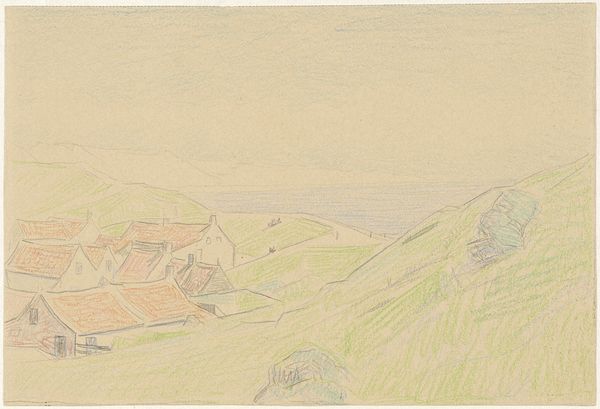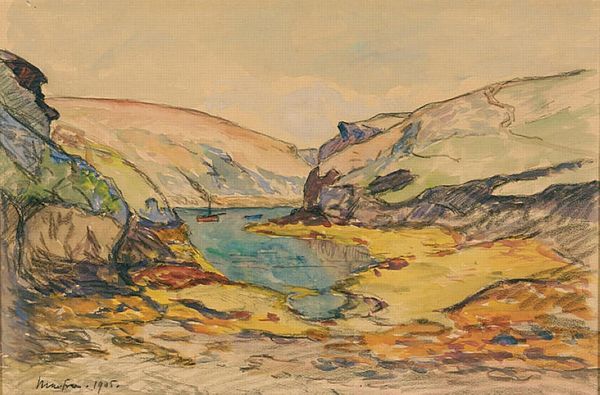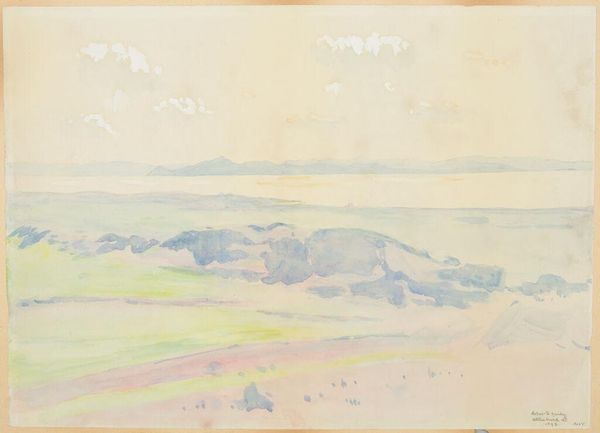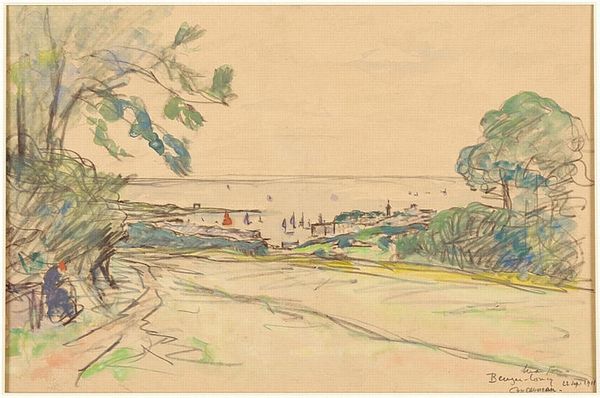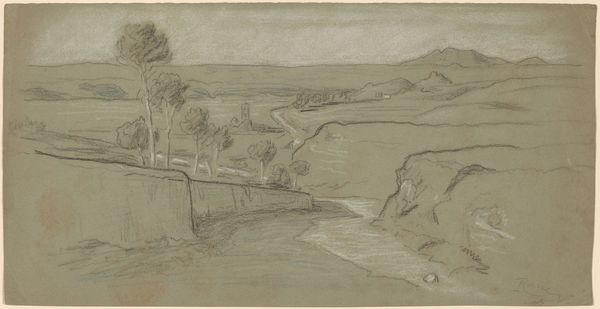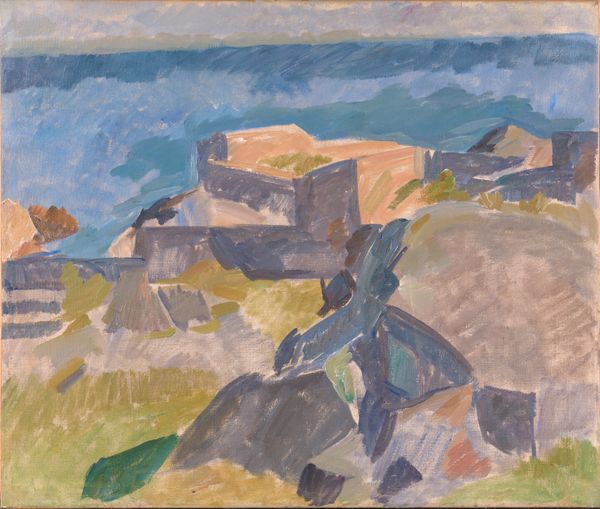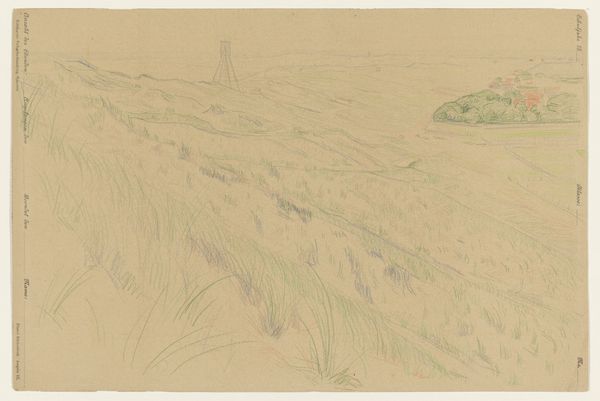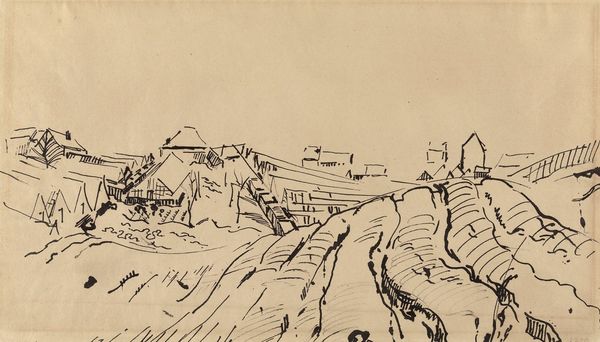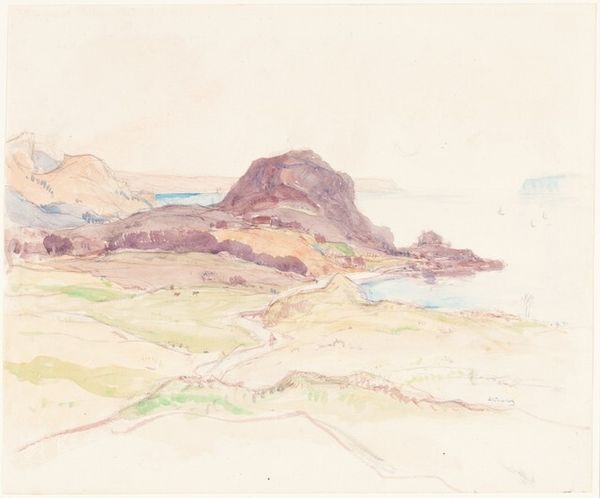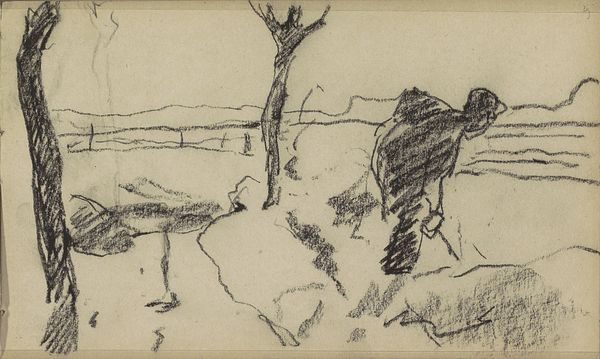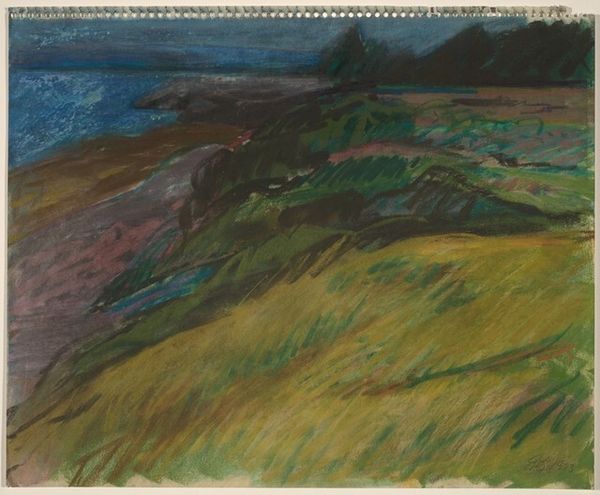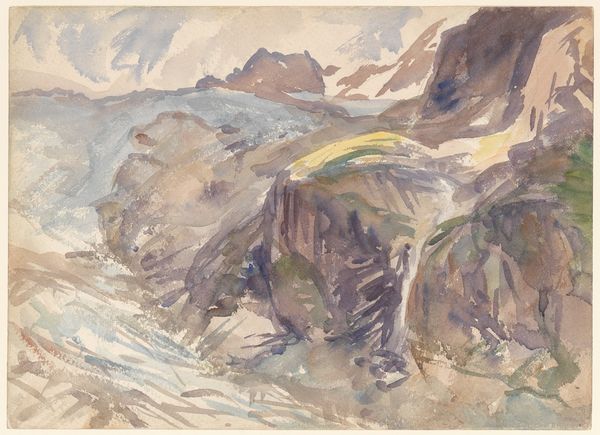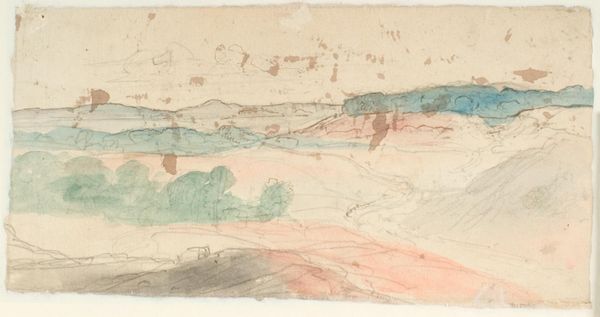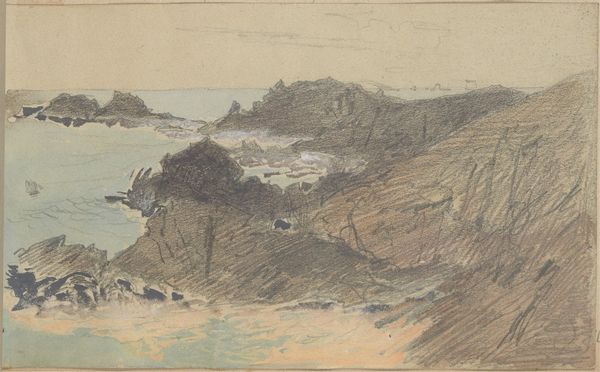
Dimensions: height 250 mm, width 320 mm
Copyright: Rijks Museum: Open Domain
Editor: Here we have Maxime Maufra’s, "Cote Rocheuse en Bretagne," made sometime between 1871 and 1918. It’s a watercolor and pencil sketch of a coastal scene. I'm struck by how immediate and ephemeral it feels, almost like a quick impression dashed off in a sketchbook. What can you tell us about this piece? Curator: I'm particularly drawn to how Maufra utilizes the materials themselves. The watercolor bleeds, the light pencil work... It really foregrounds the act of creation, doesn't it? We’re not presented with a finished, polished scene, but rather the residue of artistic labor, the means by which the image came to be. Consider the ‘plein-air’ aspect - it speaks volumes about Maufra's direct engagement with the landscape and how that interaction informed the material qualities of the work. Editor: So, you're saying it's not just about *what* he painted, but *how* he painted it? The quick strokes, the visible pencil lines... Curator: Exactly! Think about the materials themselves. Watercolor was often associated with preparatory work or amateur pursuits. By using it in this way, Maufra seems to challenge the traditional hierarchy that valued oil painting as superior. Is he perhaps democratizing art making? Making the artistic process more transparent and accessible? Editor: That’s fascinating! It almost feels rebellious, like he's showing us the scaffolding rather than just the finished building. What would this sketch have meant to its contemporary viewers? Curator: In this period, landscape painting was transitioning from grand, idealized scenes to more personal and immediate observations. Maufra’s choice of materials and his direct approach contribute to this shift, signaling a new kind of engagement with the world around him, rejecting the industrialised methods of painting favored by the establishment. He celebrates the craft. Editor: That really changes how I see the artwork. I was initially focused on the coastal scene itself, but now I realize the real subject is the act of making art! Curator: Precisely! And by extension, the value and meaning we assign to artistic labor and the materials artists choose to employ.
Comments
No comments
Be the first to comment and join the conversation on the ultimate creative platform.
